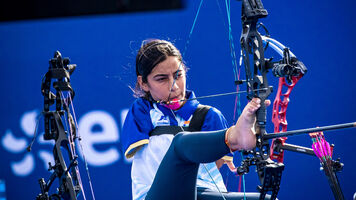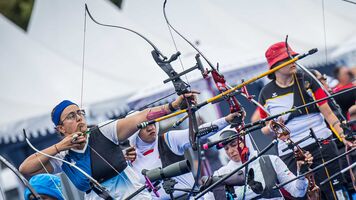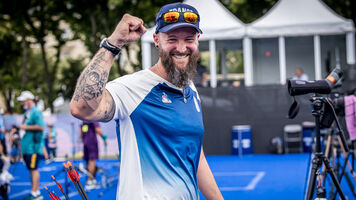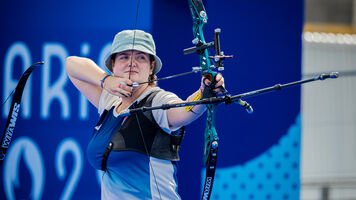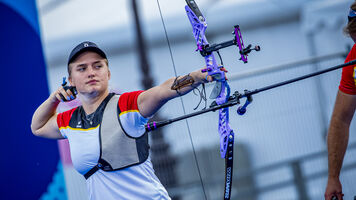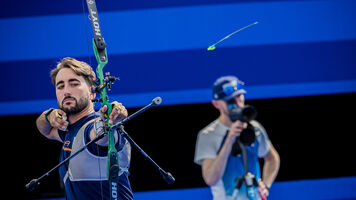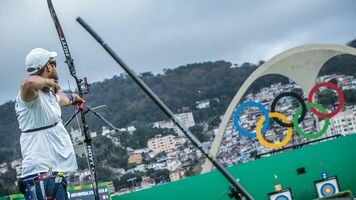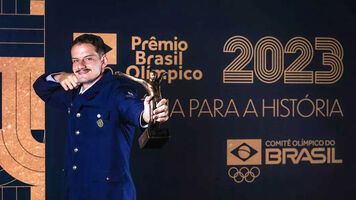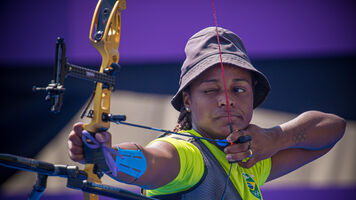Indian archers eager to repay national investment with results
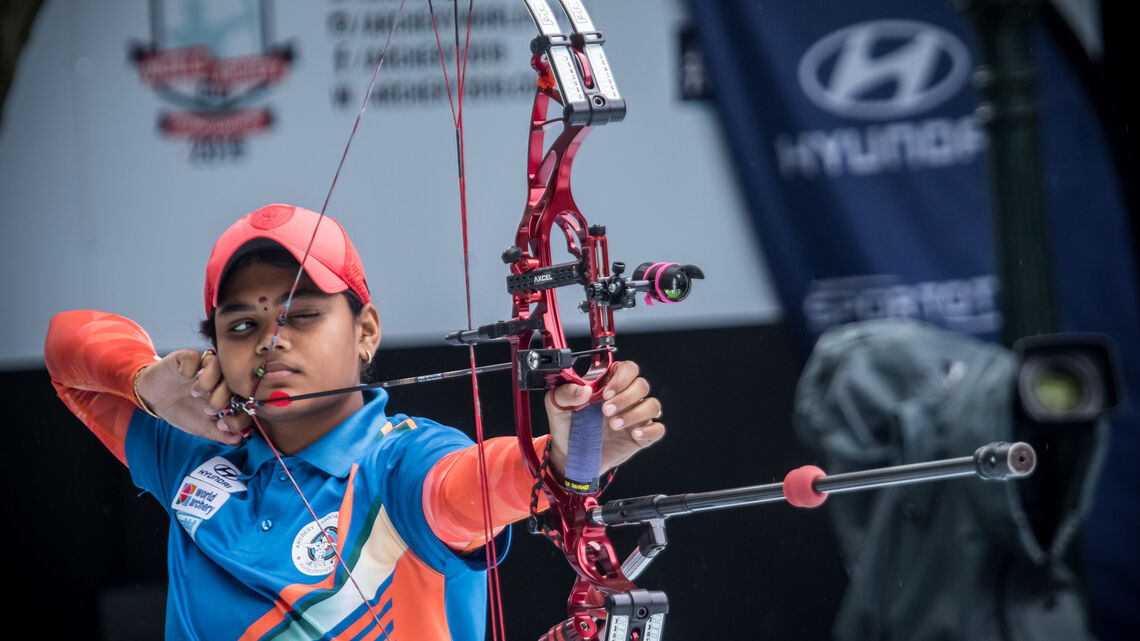
Every day on the way to the practice field, India’s Jyothi Surekha Vennam passes the Krishnam River. It’s the body of water where, at the age of four, she entered the Limca Book of Records – a publication that lists all the world records held by people from India – after crossing the inlet three times in 3 hours, 20 minutes and six seconds, covering a distance of five kilometres.
Her record was a harbinger of the success to come – although not in the water.
The 24-year-old from Vijayawada, a city in the southern state of Andhra Pradesh, has only added to her coffer of achievements since transitioning to a land-based sport, tallying the most international medals of any Indian compound archer ever – including the country’s first individual medal in the compound women’s event at the worlds, a bronze in 2019 – and the second-most in the nation’s history behind recurver Deepika Kumari.
Both women are sterling examples of the fruits of India’s commitment to the sport since the national governing body’s inception in 1973. As per guidelines issued by India’s government, archery is one of six priority sports selected for promotion in the country, swiftly gaining popularity as it continues to support its best athletes and identify hidden talents at the grassroots level.
“The results have been amazing,” Vennam said. “There are so many athletes who couldn’t afford equipment or proper coaching and just needed some extra support. As they continue to receive the attention they need, the game can grow in the country even more and we can win medals on a bigger scale.”
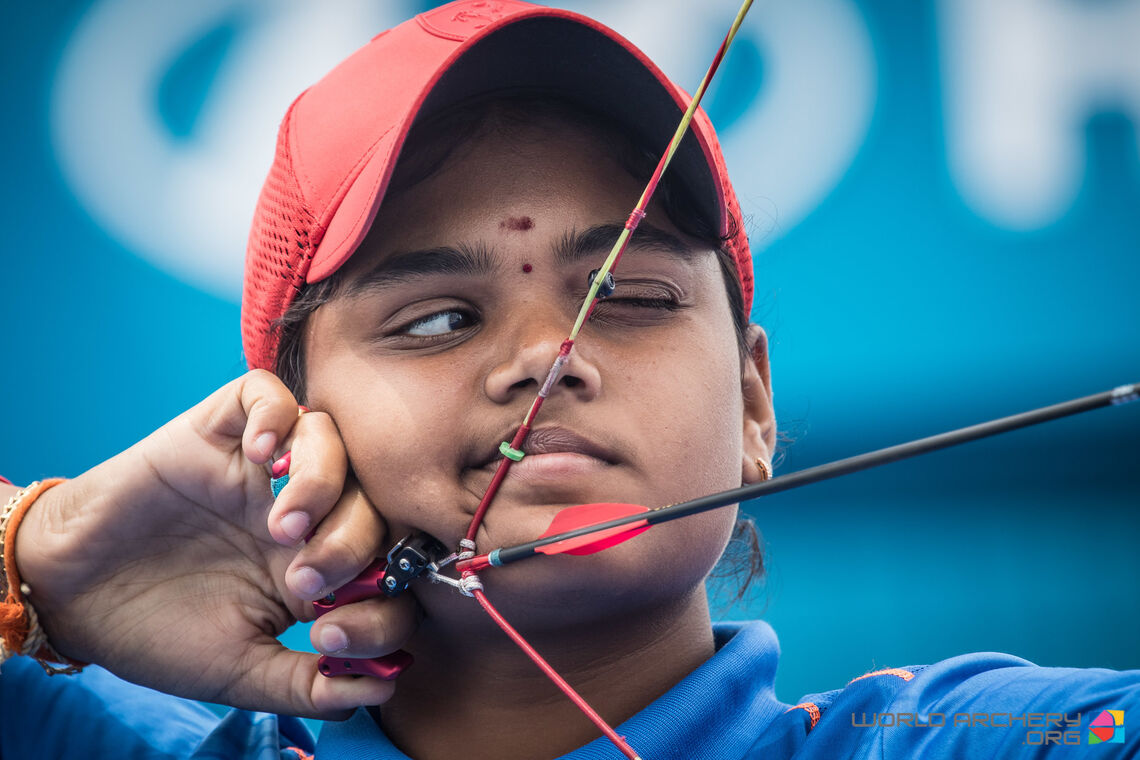
After a great deal of investment and intense technical training in the USA, the Indian compound team had its major breakthrough at the 2014 Asian Games, taking the men’s team title and medalling in every event.
On the recurve side, meanwhile, the nation has already secured four quota places to this summer’s postponed Tokyo 2020 Olympic Games – and it will look to upgrade its single women’s invitation to a team ticket at the final qualification event being held alongside the third stage of the Hyundai Archery World Cup in Paris in June.
India recently announced its Olympic and international team for 2021. It is led by top archers Kumari and Atanu Das, who were married during the pandemic and could together in the mixed team competition, which makes its debut in Tokyo. The quest for an Olympic medal – an Olympic gold – is a key driver of India’s investment in the sport
“India has been longing for gold medals, especially in archery, for a long time,” Vennam said.
The country’s commitment to archery is emblematic of all sport’s symbiotic relationship between financial support and success. The better an athlete performs, the more incentivised a country is to continue aiding in that success.
But there is a level of trust, and risk, required at the start.
Without an initial wave of support, there is little hope of changing a performance trajectory. A lack of awareness and the unavailability of facilities and equipment long prevented archery from getting its proper due in India. But since supporting academies and training programmes, a sport that is firmly rooted in Indian tradition finally has the means to compete at the sport’s highest level.
It would be naive to assume all the investment won’t bring even greater results. The establishment should watch out.
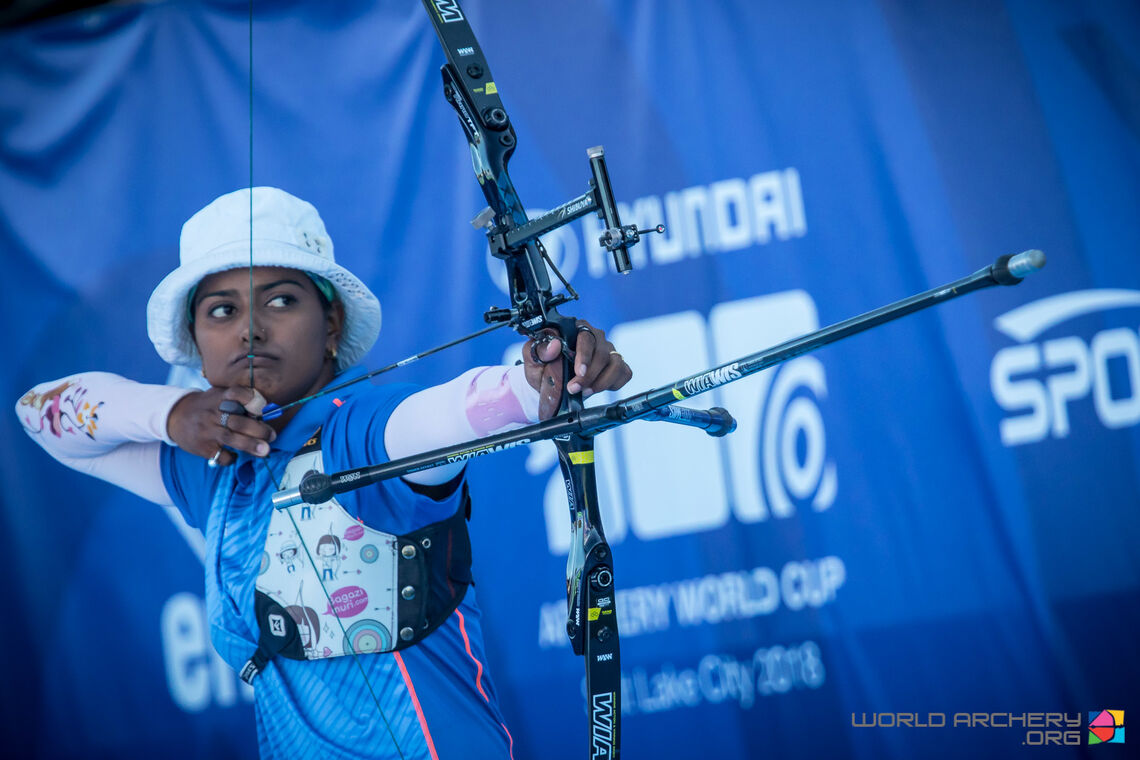
There are already huge stories of success.
Kumari, for example, took up archery while seeking ways to reduce the financial burden on her family as it struggled to make ends meet. The JRD Tata Sports Complex in Jamshedpur provided free food, lodging and facilities like toilets in the women’s bathroom – luxuries she had not previously had access to.
She later graduated to a professional set-up at the Arjun Archery Academy, an institute set up by Meera Munda, wife of then chief minister of the state Arjun Munda at Kharsawan.
Four years later, Kumari became the number one archer in the world, gaining national – and international – fame by winning gold at the 2010 Commonwealth Games in Dehli and gold at the Archery World Cup stage in Antalya in 2012.
She was given the Arjuna Award, India’s second-highest sporting award, in 2012 by then-President of India Pranab Mukherjee and the Padma Shri by the Government of India in 2016.
"Our neighbours used to tell my parents that they shouldn't be sending a girl outside the house,” Kumari revealed during a recent online TEDx talk. “But today, when I go home, they all come and ask my parents why they weren't informed of my arrival. It feels nice to know I've achieved something, that people want to see me, want their children to be like me."
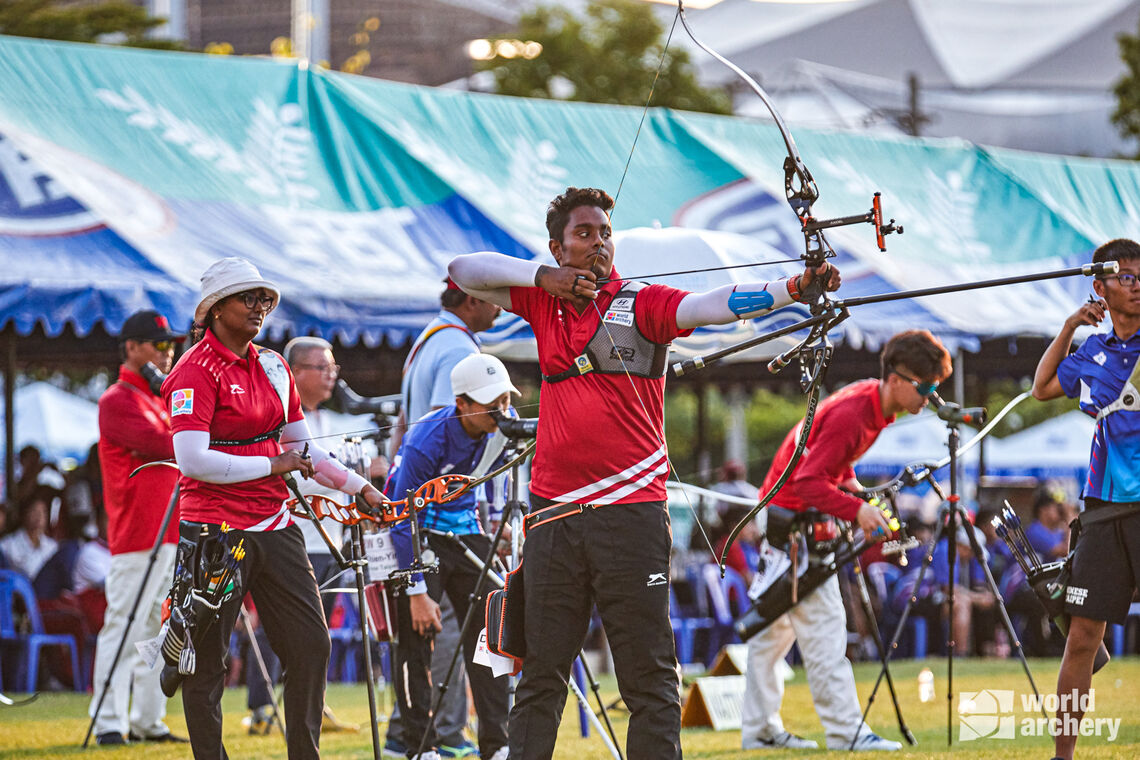
Kumari and Vennam’s international results are proof of a return on the investment in archery in India.
A medal in Tokyo would go a long way toward inspiring more children across the extremely populous nation to pursue archery. Yet for all of the country’s successes, that goal has so far proved elusive.
The Games might be exclusively a recurve event, but Vennam is no less invested in her country’s success at the postponed Olympics in Tokyo than any of her teammates as she prepares to compete at the Hyundai Archery World Cup stage in Guatemala City later this month.
She’s also on form, having set a new national record last month by scoring 710 out of a possible 720 points during trials for this year’s Indian team, beating her own personal best of 709 that she set last year. The team is poised for success when the brand-new international season begins on 19 April.
This year might not be the year – but India is a sleeping giant, with the potential to dominate the sport. Vennam, Kumari, Das and the rest of the squad are products of the comprehensive and complex high-performance system that supports Indian archery. And all that investment will see a return.
“I think you should be proud to represent your country and win a medal for your country,” Vennam said. “India’s goal is to be on the top. To win gold for the country, that is my goal as well. I hope one day for it to be a reality.”



